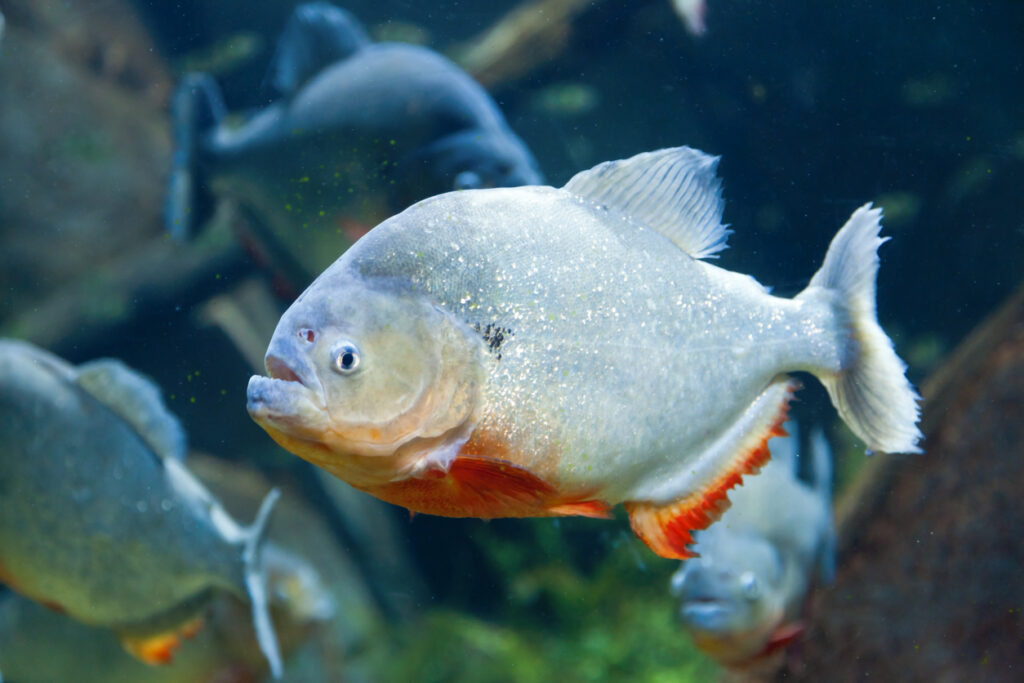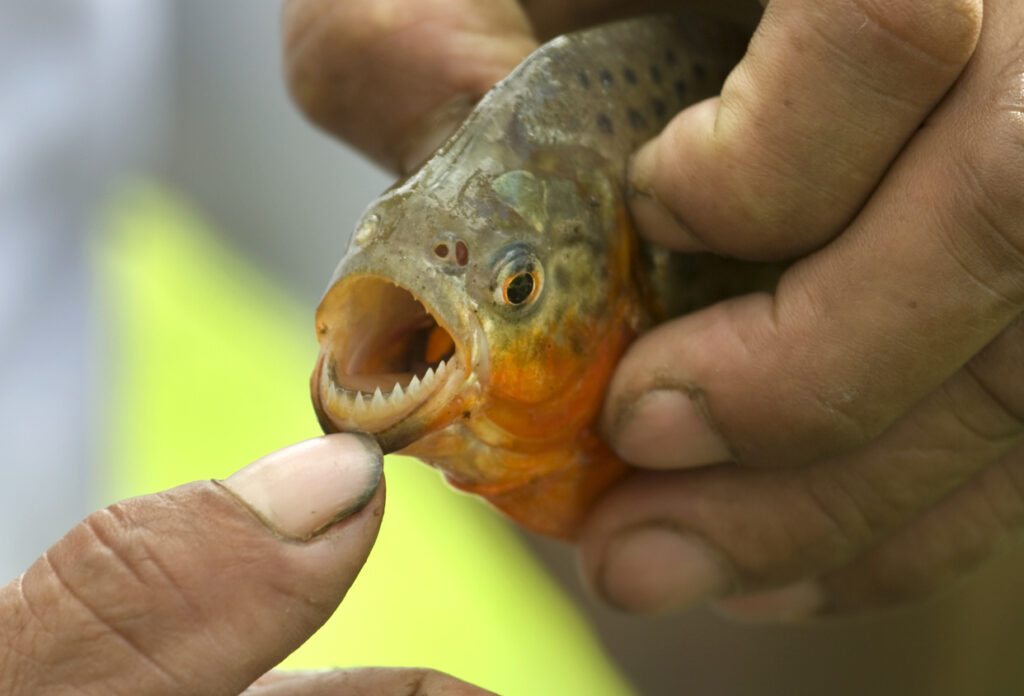Despite the horror film from 1978, piranhas are one of the world’s most misunderstood fish. Part of the Serrasalmidae family, there are thought to be around 30-60 different species of piranhas but the exact number of is actually unknown. While they might not be the prettiest of creatures to look at, piranhas really are fascinating and there’s a lot to learn about these toothy fish.
If you want to see these so-called ferocious fish up close and personal, our Edge of the Rainforest exhibit can help you understand piranhas and get to know them a little better. But don’t worry – you’ll be perfectly safe!
Piranhas are native to South America
Piranhas are freshwater fish, which means they spend the majority of their lives in fresh water such as lakes and rivers. Other freshwater fish include Atlantic salmon, rainbow trout and minnow, and they typically face threats from human activity like overfishing and pollution.
Piranhas are commonly found in the Amazon River, specifically the Amazon basin that covers an area of around 35% of South America. They are non-migratory which means they will not travel around and typically stay in one area. In comparison, salmon will migrate up river to breed in a safer environment.
Piranhas typically grow up to 25cm
The size of piranhas can vary depending on species, but you’d be forgiven for thinking they are huge, given their fearsome reputation. Typically, piranhas will grow to around 5-10 inches (12-25cm). However, the red-bellied piranhas (Pygocentrus nattereri) can grow slightly bigger, with some known to reach around 35-40cm.
In most cases, they weigh less than 2 pounds (0.9kg), however some of the bigger species can weigh just over 3kg.
They have a diverse range of patterns and colours, including the red-bellied piranha which has shimmering silver scales and red-orange underbelly – they really are quite eye-catching creatures, even with the sharp teeth!

These so-called terrifying fish actually live in protective packs
You may think that piranhas swim in large groups as a form of effective attack, but it is, in fact, the opposite. Piranhas can live in protective packs of up to 1,000 fish as a form of self-defence. This is because they are the perfect meal for other river dwellers such as caimans, river dolphins, turtles, birds and even otters!
Piranhas shed and regrow their teeth
Piranha literally translates to ‘tooth fish’ in the Brazilian language of Tupi, and it couldn’t be a more fitting name for these creatures. It’s a piranha’s teeth that gives the species such a mistaken preconception, with around 10 razor sharp 4mm teeth per jaw. The pronounced underbite means that the bottom set of teeth is nearly always on show.
The interlocking teeth are so sharp they can bite through bones, and throughout the piranha’s life they will lose teeth like many other fish. However, the piranha will replace its teeth in sections. It takes approximately 100 days for a piranha to replace its whole set of teeth, and they will go through the process for their entire lifetime.
With that in mind, many of you will no doubt have one question on your mind – can piranhas eat people? The truth is, piranhas will only really eat human flesh if it’s desperate, or if the person is already dead. In some cases piranhas been known to bite people, but typically it only happens if the fish feels threatened.

Piranhas are omnivores
Despite its reputation as a flesh-eating creature, the piranha is omnivorous which means they eat a mix of plants and animals. In fact, some species of piranha are even vegetarian. A typical diet for the piranha includes seeds, insects and fish. Younger piranhas may feed on crustaceans, while some adult piranhas have been found with fragments of birds and snakes in their stomachs.
In some cases, piranhas may also feast on the fins nipped from the tails of larger fish.
Some piranhas can bark
Piranhas are actually quite good communicators, and researchers have identified three different calls. In most cases, these calls were made when piranhas were in a confrontation of some kind – as if it were telling its companion or enemy to go away, or issuing a threat.
They make these noises by contracting and expanding their swim bladder, which keeps them afloat, and grinding their teeth. As the waters of the Amazon basin are quite murky, barking is another way for the piranhas to let others know about food sources and approaching predators.
So, there you have it! Those scary, sharp-toothed piranhas are actually very interesting, with some fascinating features and characteristics. Go and check them out for yourself at Edge of the Rainforest, simply book online!
